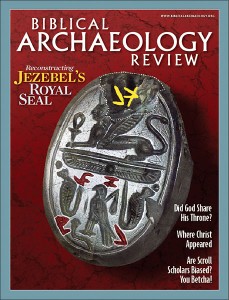Answer: C. Eye Idol
This “eye idol” comes from the Tell Brak region of northeastern Syria, where thousands of similar figurines have been discovered in a monumental building now known as the “Eye Temple.” The lavish interior of the Eye Temple featured an altar decorated with colorful stones, silver nails and gold foil. Multi-colored mosaics covered the walls and floor.
Eye idols from Tell Brak tend to be made of bone or alabaster, and range in size from 1 to 10.5 inches (3–27 cm). The one pictured above is made of stone, measures 4.7 inches tall and has been dated to roughly 3000 B.C.E.
The eye was a popular religious and magical image across the ancient Near East. In the context of the “Eye Temple,” thousands of figurines like this one stood in lieu of people, keeping their gazes forever fixed on the god, enacting perpetual attentiveness to the divinity.
Although this figurine reflects an abstracted version of the form, many appear to have been personalized with carved depictions of clothes and naturalistic eyes to represent the people who brought them to the temple. Some represent a whole group of people; others, which have a small figure carved into a larger one, probably represent a parent and child. All of these “idols” are thought to have been votives, or offerings to the gods.
Answer: nine, five
Already a library member? Log in here.
Institution user? Log in with your IP address.

